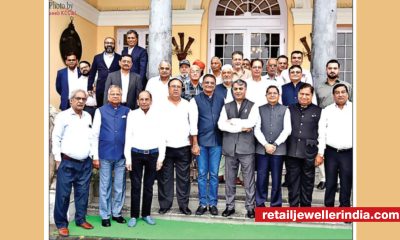Daily News
Surat braves economic crises, cuts through adversity to keep diamond trade sparkling

Russia-Ukraine war had mounted additional pressure on the diamond polishing industry
Surat, perhaps the world’s biggest centre for cutting and polishing diamonds, accounting for 90% of the diamonds traded globally, has managed to retain its shine despite the toughest economic crises. The city continues to thrive in the face of adversity — the recent global economic slowdown compounded by the after-effects of the Russia-Ukraine war. Diamond trading began in Surat at the start of the 20th century, while the polishing industry began in 1955.“The diamond industry in Surat began growing after 1955-60 when people sourced diamonds from other parts of the world and began polishing. Gradually, bigger polishing units came into existence,” said Dinesh Navadiya, chairman of the Indian Diamond Institute (IDI). Industry leaders suggest that Surat’s diamond trading and polishing hub is better equipped to withstand the global economic crises than other countries. Exports of cut and polished diamonds (CPD) declined by 9.78% from $24,433 million (Rs 1.83 lakh crore approx.) in 2021-22 to $22,044 million (Rs 1.65 lakh crore approx.) in 2022-23. “The US and China – two key buyers of CPD – are facing an economic slowdown, negatively affecting exports from Surat,” said an industry player.
“The Russia-Ukraine war mounted additional pressure on the diamond polishing industry owing to sanctions on Alrosa, a state-owned diamond mining enterprise in Russia. It alone accounts for 29% of the rough diamonds mined globally, valued at around $4 billion (Rs 32.816 crore approx.). Supply of rough diamonds from Russia to Surat for polishing is gradually declining due to the sanctions imposed by the US,” the player added. Vipul Shah, chairman of the Gems and Jewellery Export Promotion Council (GJEPC), said, “Global challenges have affected the demand for diamonds in India’s key markets, including the US and China. However, demand from other regions in Europe and South-east Asia fared well. India encountered difficulties due to the inconsistent rough diamond supply from Russia. Moreover, challenges with beneficiation (crushing and separating ore into valuable substances or waste) remained as countries such as Namibia, Botswana, and Angola preferred to have their rough diamonds cut in their own countries.” Industry players suggest that India’s position is better than other countries despite the challenges.
Vijay Mangukiya, regional chairman of GJEPC, said, “There are job losses in China due to slowdowns in the diamond industry. The Indian diamond industry has absorbed the shocks better, as the export decline is manageable.”
Courtesy: Times of India

 Personal Opinion2 weeks ago
Personal Opinion2 weeks agoBuy-back on gemstones to be on par with gold; A fear of return on the investment, more among high-end clients: Ankur Anand, Harsahaimal Shiamalal Jewellers

 Maverick Greenhorn1 month ago
Maverick Greenhorn1 month agoSegmenting retail approach to boost business performance

 Exclusive4 weeks ago
Exclusive4 weeks agoPrasad Jewellers’ Gold Bar Challenge fulfils multi-channel engagement goals, attracts young customers

 Daily News2 weeks ago
Daily News2 weeks agoTBZ – The Original launches its first store in Jaipur






























